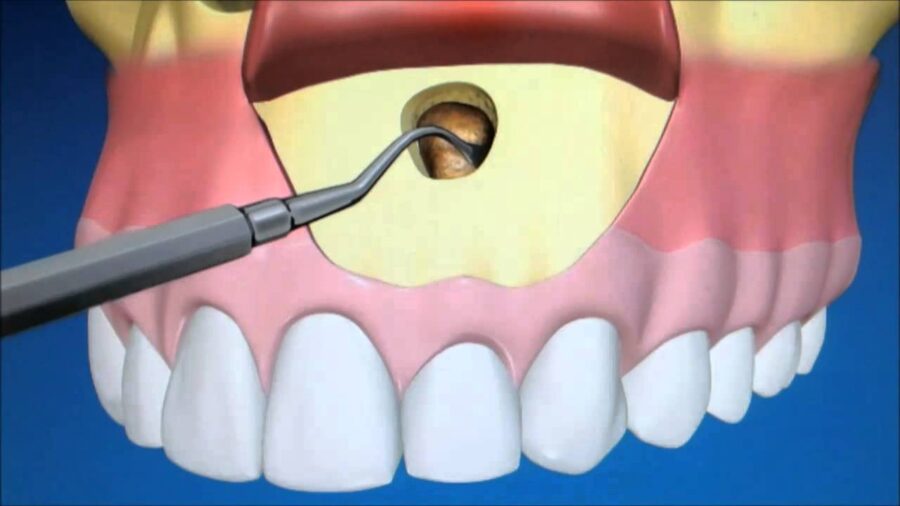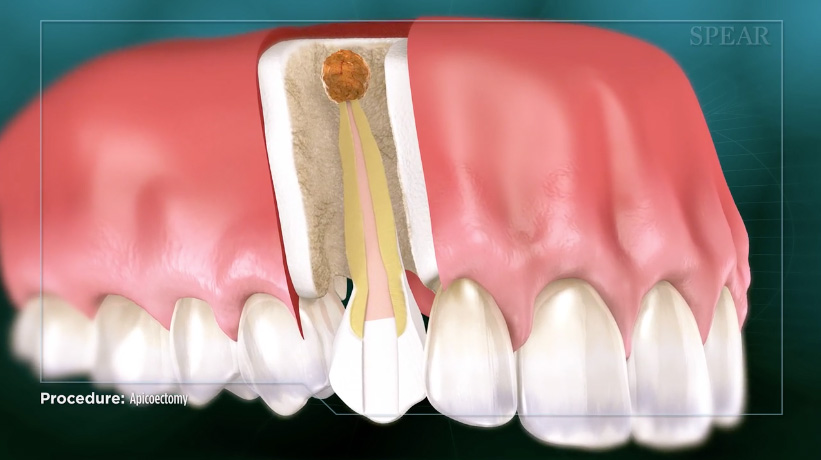An apicoectomy a dental procedure used to correct and prevent periodontal or gum disease. It involves removing parts of the roots of your teeth in order to stop them from growing into the surrounding tissue and creating pockets that trap bacteria. An Apicoectomy known as an apexification procedure, or root apex debridement. It used to remove surface irregularities on the roots of teeth in adults and adolescents with immature facial bones.
This helps prevent periodontal disease by preventing gingival recession and tooth root resorption. An apicoectomy arried out under local anesthesia and takes around 30 minutes to complete.
Why is an Apico procedure performed?
An apicoectomy performed to correct and prevent periodontal disease. It can also help to treat localized infections that result in loose teeth. The apex of your tooth is the root tip. This apex can grow into the surrounding tissue, creating pockets that trap bacteria. This periodontal disease puts your teeth at risk of tooth root resorption (TRR) or subsequent loss of the tooth. An apicoectomy stops this from happening by removing parts of the roots of your teeth and creating a smooth surface. An apicoectomy is also used to treat localized infections that result in loose teeth.

Apico is surgical removal of the tip (apex) of a tooth’s root. It’s a minor surgery done in our office under local anesthesia. This means you’re awake for the procedure and can drive yourself home afterward. It also means you shouldn’t feel any pain while one of our specialists completes the apex removal.
A root end surgery causes very little discomfort. It minor procedure done in your dentist’s office, and it doesn’t require any general anesthetic. You can usually drive yourself home afterward and go back to your normal activities the next day.
What happens in this Dental procedure?
An apicoectomy carried out under local anesthesia. Once you are numb, your dentist will make an incision in the gum tissue to reveal the tooth roots. Your dentist will remove any diseased or infected tissue around this area. The remaining gum tissue sutured back up to help the wound heal. Your dentist may recommend that you have a root dressing placed over the incisions to prevent the incisions from healing together. The dressing removed a few days later. You may need to take antibiotics to prevent infection.
Statistics demonstrate as high as about 85% of apicoectomy procedures are successful long-term, while others show the success rate as low as 25%. With the help of advanced dental technology, the success rate is often higher than average and the recovery period is more favorable.
Recovery time for Apico procedure?
Your dentist will advise you on how long to take off work after a tooth root surgery. However, most people return to work after about a week. An apicoectomy usually takes 30 to 90 minutes. The location of the tooth and the intricacy of the root structure can affect the time needed to complete the procedure. Some side effects from an apicoectomy are bleeding, swelling, and a change in the color of the gums. You may also notice a temporary change in the taste of food.
The major risk of apicoectomy is that it simply does not relieve a patient’s symptoms. If the area does not heal or continues to cause pain, this consistent with apicoectomy failure and considered a poor outcome. If this occurs, the patient may need a second apicoectomy or the tooth extracted.
Conclusion
An apicoectomy is a dental procedure that is used to correct and prevent periodontal disease. It involves removing parts of the roots of teeth in order to stop them from growing into surrounding tissue and creating pockets that trap bacteria. An apicoectomy performed under local anesthesia, and you may need to take antibiotics to prevent infection.
An apicoectomy a common dental procedure where inflamed gum tissue and the end of the root of your tooth removed while the top of your tooth left in place. It’s often called a root-end resection because it works on the end (or, tip) of your root called the apex.
Follow Us For More Updates






SO GOOD ROYAL DENTAL CLINIC
very very good